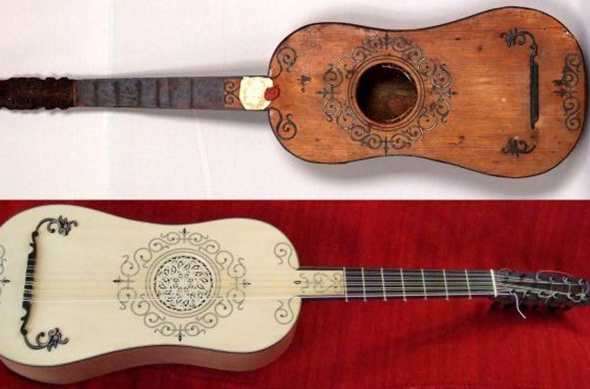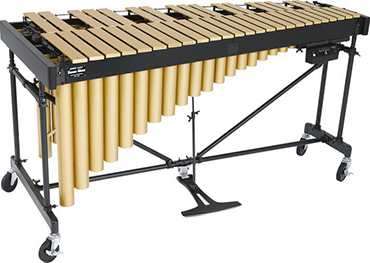
History of the guitar
Guitar is a popular stringed musical instrument. It can be used as an accompanying or solo instrument in various genres of music.
The history of the appearance of the guitar goes back centuries, many millennia BC.  One of the oldest stringed plucked instruments was the Sumerian-Babylonian kinor, which was mentioned in the Bible. In ancient Egypt, similar instruments were used: nabla, zither and nefer, while the Indians often used wines and sitar. In ancient Russia, they played the harp known to everyone from fairy tales, and in ancient Greece and Rome – kitars. Some researchers believe that ancient citharas should be considered the “ancestors” of the guitar.
One of the oldest stringed plucked instruments was the Sumerian-Babylonian kinor, which was mentioned in the Bible. In ancient Egypt, similar instruments were used: nabla, zither and nefer, while the Indians often used wines and sitar. In ancient Russia, they played the harp known to everyone from fairy tales, and in ancient Greece and Rome – kitars. Some researchers believe that ancient citharas should be considered the “ancestors” of the guitar.
Most plucked string instruments before the advent of the guitar had a rounded body and a long neck with 3-4 strings stretched over it. At the beginning of the 3rd century, ruan and yueqin instruments appeared in China, the body of which was made of two sound boards and shells connecting them.
Europeans liked the inventions of people from Ancient Asia. They began to invent new stringed instruments. In the 6th century, the first instruments appeared that sounded like a modern guitar: Moorish and Latin guitars, lutes, and a few centuries later the vihuela appeared, which in form became the first prototype of the guitar.
Due to the spread of the instrument throughout Europe, the name “guitar” has undergone great changes. In ancient Greece, the “guitar” had the name “kithara”, which migrated to Spain as the Latin “cithara”, then to Italy as “chitarra”, and later “gitar” appeared in France and England. The first mention of a musical instrument called “guitar” dates back to the 13th century.
In the 15th century, an instrument with five double strings was invented in Spain. Such an instrument was called the Spanish guitar and became the musical symbol of Spain. It was distinguished from a modern guitar by an elongated body and a small scale. By the end of the 18th century, the Spanish guitar took on a finished look and a large stock of pieces to play, helped by the Italian guitarist Mauro Giuliani. In the early 19th century, the Spanish guitar maker Antonio Torres improved the guitar to its modern shape and size. This type of guitar became known as classical guitars.
In the early 19th century, the Spanish guitar maker Antonio Torres improved the guitar to its modern shape and size. This type of guitar became known as classical guitars.
The classical guitar appeared in Russia thanks to Spaniards touring the country. Usually the guitar was brought as a souvenir and it was difficult to find it, they appeared only in rich houses and hung on the wall. Over time, masters from Spain appeared who began to make guitars in Russia.
The first famous guitarist from Russia was Nikolai Petrovich Makarov, who in 1856 tried to organize the first international guitar competition in Russia, but his idea was considered strange and rejected. A few years later, Nikolai Petrovich was still able to organize a competition, but not in Russia, but in Dublin.
After appearing in Russia, the guitar received new functions: one string was added, the guitar’s tuning was changed. A guitar with seven strings began to be called the Russian guitar. Until the middle of the 20th century, this guitar was popular not only in Russia, but throughout Europe.  But after the 2nd World War, its popularity declined, and in Russia they began to play the regular guitar more and more often. At the moment, Russian guitars are rare.
But after the 2nd World War, its popularity declined, and in Russia they began to play the regular guitar more and more often. At the moment, Russian guitars are rare.
With the advent of the piano, interest in the guitar began to decrease, but already in the middle of the 20th century it returned due to the appearance of electric guitars.
The first electric guitar was created by Rickenbacker in 1936. It was made of a metal body and had magnetic pickups. In 1950, Les Paul invented the first wooden electric guitar, but after a while he transferred the rights to his idea to Leo Fender, as he was not supported by the company where he worked. Now the design of the electric guitar has the same appearance as in the 1950s and has not undergone a single change.





